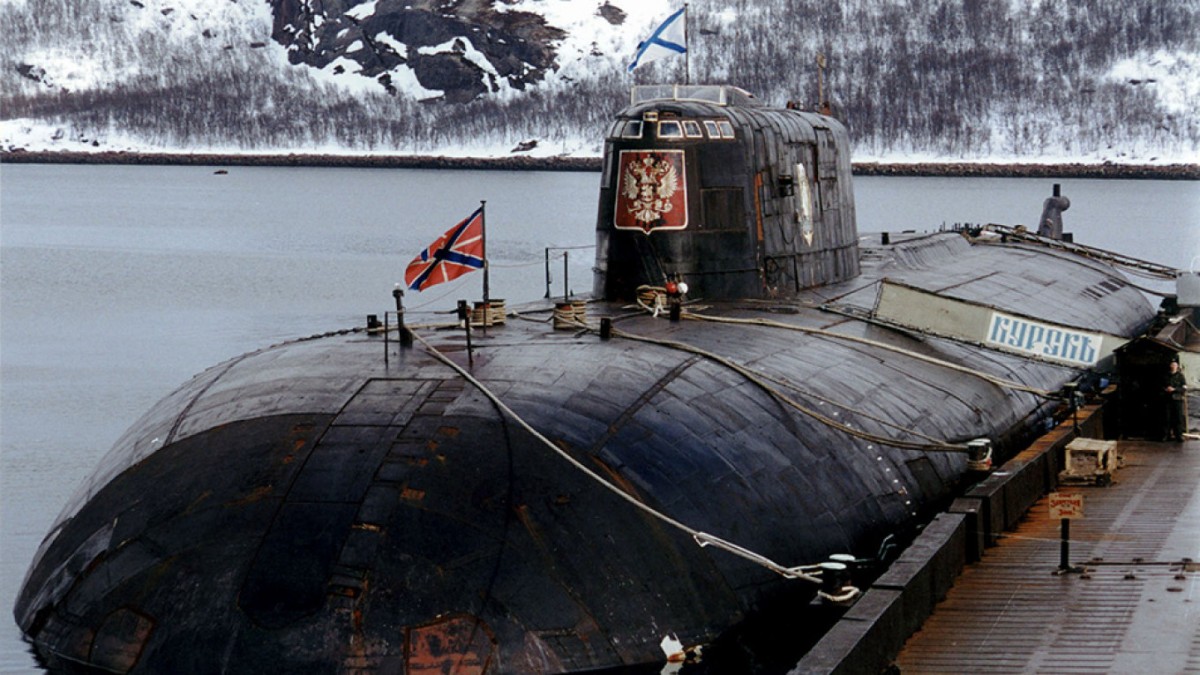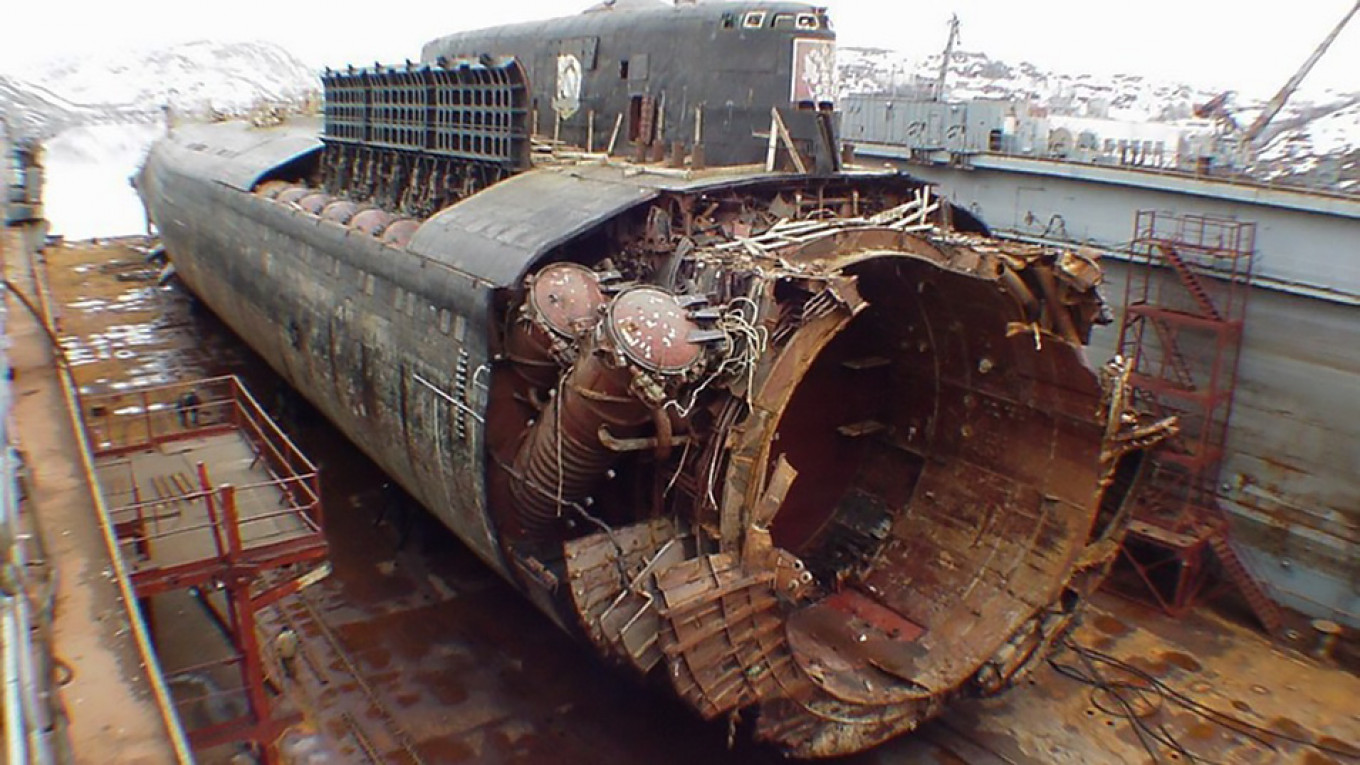When Putin Played ‘Russian Roulette’ & Lost A Nuclear Submarine & Its 118 Crew Members In The Barents Sea

In a remarkable confluence of historical and present conflicts, Ukraine’s recent assault into Russia’s Kursk region has rekindled memories of a World War II battle and a contemporary naval disaster.
The Kursk region, situated just across the border from Ukraine’s northeastern Sumy area, has recently been thrust into the spotlight with Ukraine’s audacious multi-brigade incursion.
Initially perceived as a routine raid akin to Ukrainian operations in May 2023 and March 2024, the latest offensive has proven to be a departure from previous tactics, marked by the involvement of seasoned Ukrainian ground forces.
The assault has surprised the Russian military. The new Ukrainian offensive has quickly become a focal point due to its connection to the storied history of the Kursk name.
The region evokes memories of the iconic Battle of Kursk, which unfolded nearly 80 years ago during World War II. In 1943, Kursk witnessed one of the largest and most intense armored engagements, where Soviet forces ultimately triumphed over Nazi Germany.
AfriPrime App link: FREE to download...
https://www.amazon.com/Africircle-AfriPrime/dp/B0D2M3F2JT
Compounding the historical significance, the name Kursk also carries the weight of one of the biggest naval tragedies.
In 1993, the Russian submarine K-141 was named in honor of the Battle of Kursk, commemorating the 50th anniversary of the World War II engagement. However, this tribute was overshadowed by a tragedy.
On August 12, 2000, the Kursk sank during naval exercises in the Barents Sea following a catastrophic explosion, resulting in the deaths of all 118 crew members. The disaster remains one of the darkest episodes of President Vladimir Putin’s early tenure.

The Kursk Submarine: Engineered To Target US Aircraft Carriers
The Kursk submarine was one of 11 nuclear-powered Project 949A Antey (Oscar II) cruise missile submarines constructed at Sevmash in Severodvinsk and was among the five assigned to the Russian Navy’s Northern Fleet.
The development of this class of submarines was driven by the Soviet Union’s profound concern during the Cold War about the threat posed by the United States fleet of aircraft carriers.
The Soviets perceived American carriers as formidable threats capable of launching thermonuclear strikes against the Soviet Union and as potential hunters of the USSR’s nuclear ballistic missile submarines.
In response, the Soviet Union invested heavily in advanced weapon systems designed to counter and destroy American carriers.
The Antey-class submarines were a key part of this strategy. Known as “Oscar II” by NATO, these large nuclear-powered submarines were specifically designed to target and destroy major surface vessels, especially aircraft carriers.
Each Oscar II measures 508 feet in length with a beam of nearly 60 feet and displaces 19,400 tons—twice the displacement of a destroyer.
To compete with American nuclear-powered carriers, each Soviet submarine was equipped with two OK-650 nuclear reactors, delivering a combined 97,990 horsepower. This power enabled them to achieve speeds of up to 33 knots underwater.
AfriPrime App link: FREE to download...
https://www.amazon.com/Africircle-AfriPrime/dp/B0D2M3F2JT
The substantial size of the Oscar IIs was due to their capacity to carry large missiles. Each submarine was armed with 24 P-700 Granit missiles, which were as large as a small aircraft—33 feet long and weighing 15,400 pounds.
These missiles could travel at speeds of Mach 1.6 and had a range of 388 miles. They utilized the now-obsolete Legenda satellite targeting system to accurately home in on aircraft carriers.

Each Granit missile was capable of carrying either a 1,653-pound conventional high-explosive warhead, sufficient to inflict significant damage, or a 500-kiloton warhead, capable of destroying an aircraft carrier in a single strike. A total of 13 Oscar I and Oscar II submarines were built, including the K-141 Kursk.
The Faulty Torpedo
The boat was operating in the northern Barents Sea, gearing up for a major naval exercise—the first since the Soviet Union’s dissolution nine years earlier.
The exercise featured four attack submarines, the Northern Fleet’s flagship battle cruiser, Pyotr Velikiy, and numerous smaller vessels.
On August 12, 2000, at 11:28 AM local time, an underwater explosion jolted the area, followed by an even more powerful blast just two minutes later. Norwegian seismic monitoring stations picked up both explosions. Stations in Canada and the United States also recorded these events, and the Norwegian service confirmed that they were explosions, not earthquakes.
According to some Russian accounts, the 28,000-ton battlecruiser Pyotr Velikiy felt a significant shake from the initial explosion. The Kursk submarine, severely damaged by the blasts, sank in 354 feet of water at a steep 20-degree angle. The explosions had torn a large hole in the submarine’s forward bow close to the torpedo compartment.
An investigation by the Russian Navy determined that the explosion was caused by one of the Kursk’s Type 65-76A super-heavyweight torpedoes. This blast was likely due to a defect in a weld that failed to contain the hydrogen peroxide fuel chamber.
AfriPrime App link: FREE to download...
https://www.amazon.com/Africircle-AfriPrime/dp/B0D2M3F2JT
Reports also revealed that the crew was not properly trained to handle these torpedoes or their fuel. According to the US National Library of Medicine, while hydrogen peroxide itself is not flammable, it can ignite flammable materials and support combustion by releasing oxygen as it breaks down.
In a documented incident, 35 percent hydrogen peroxide leaking onto a wooden pallet caused a severe fire, demonstrating the risks associated with hydrogen peroxide spills.
What Happened To The Crew
The sequence of events on the Kursk started with the hydrogen peroxide leak that ignited a fire. This fire then triggered the detonation of the Type 65-76A torpedo’s 900-pound high-explosive warhead.
The explosion probably caused a major breach in the submarine’s hull near the torpedo compartment. The subsequent, larger explosion was likely the result of the remaining torpedoes detonating.
Despite the Kursk sinking, not all 118 crew members died instantly. At least 23 sailors were able to move to a rear compartment of the submarine, where they waited for rescue. This was confirmed by Lieutenant Captain Dmitri Koselnikov, who left a note two hours after the second explosion, documenting that 23 men were still alive.
Most of the details in the note were considered too personal or sensitive for public release, but what was revealed provided a grim account of the crew’s final moments. The note confirmed that some sailors survived the initial explosions but were trapped inside the submarine for an extended period.
After the initial explosions, the surviving crew members, who were located in the rear compartments, broke protocol and moved through the submarine to gather in the ninth compartment, the furthest rear section where the only escape hatch was located.
Realizing that their colleagues in front sections had been killed and that the hatch was not an option for escape, the survivors prepared for the inevitable.
In his final note, Lieutenant Captain Kolesnikov described attempts to use the escape hatch and their subsequent resignation to their fate. His luminous wristwatch helped him record the exact times of the note’s writing, which was between 1:34 PM and 3:15 PM on the day of the disaster.
It remains unclear why the men couldn’t use their diving gear to escape through the hatch; some experts speculate that the blasts may have damaged the hatch. Unfortunately, despite their efforts, all the crew members eventually succumbed to the disaster.
Indian Navy Captain Anurag Bisen, who was posted in Russia at the time, “One of the key safety features of submarines is that it is divided into compartments, and they can be isolated to contain a disaster. But it is only when the submarine is in shallow waters that a rescue mission can be carried out successfully. The crew of the Russian submarine Kursk could have been saved as there were many warships in the vicinity.”
Was There a Chance To Save The Crew?
Despite 23 sailors managing to reach a rear compartment of the Kursk and wait for rescue, the Russian Navy’s response was notably slow, and the Kremlin initially rejected offers of Western assistance.
Instead of accepting international help, Russia deployed mini-submarines that made several unsuccessful attempts to connect with the Kursk’s escape hatch.
Captain Bisen said that valuable time was lost due to President Vladimir Putin’s refusal to accept help from the UK Navy, which could carry out the rescue.
Putin eventually agreed to international aid, but by then, it was too late for the trapped crew. At the time of the disaster, Putin was vacationing in Sochi and turned down assistance from France, Germany, Italy, Norway, the US, and the UK.

International help was only accepted five days after the explosions. Russia eventually requested the help of Norwegian divers, who managed to open the hatch in just a few hours, but by that time, it was too late to rescue any of the crew.
The 23 sailors had all perished. The response of the Russian Navy was criticized as sluggish and ineffective, and the incident was downplayed by Russian authorities.
The aftermath of the rescue efforts was controversial. Evidence gathered after the submarine was recovered showed that some of the sailors may have survived for up to eight hours following the explosions.
Rumors & Speculation Surrounding the Incident
In the years following the Kursk accident, Russian media suggested that two U.S. submarines and a British submarine were spotted near the Russian naval exercise area at the time of the disaster.
US officials confirmed the presence of an American submarine in the vicinity but denied any collision with the Kursk. Likewise, NATO officials supported this position concerning vessels from the U.S. and the UK.

However, in November 2021, retired Russian Admiral Vyacheslav Popov, who was the commander of the Northern Fleet during the Kursk disaster, made a controversial claim. He asserted that the Kursk’s sinking was caused by a collision with a NATO submarine, contradicting the official conclusion that a faulty torpedo was to blame.
In an interview with the Russian state news agency RIA Novosti, Popov suggested that a NATO submarine may have inadvertently collided with the Kursk while shadowing it. He admitted that he could not identify the NATO submarine or provide any supporting evidence for his claim.
At the time of Popov’s interview, Kremlin spokesperson Dmitry Peskov declined to comment on the accusation, instead referencing the official investigation into the incident.
Popov’s allegations may stem from his contentious role in the aftermath of the disaster, as he was criticized for his slow and ineffective response following the explosions that occurred on August 12, 2000.
AfriPrime App link: FREE to download...
- Questions and Answers
- Opinion
- Story/Motivational/Inspiring
- Technology
- Art
- Causes
- Crafts
- Dance
- Drinks
- Film/Movie
- Fitness
- Food
- Games
- Gardening
- Health
- Home
- Literature
- Music
- Networking
- Other
- Party
- Religion
- Shopping
- Sports
- Theater
- Wellness
- News
- Culture
- War machines and policy

